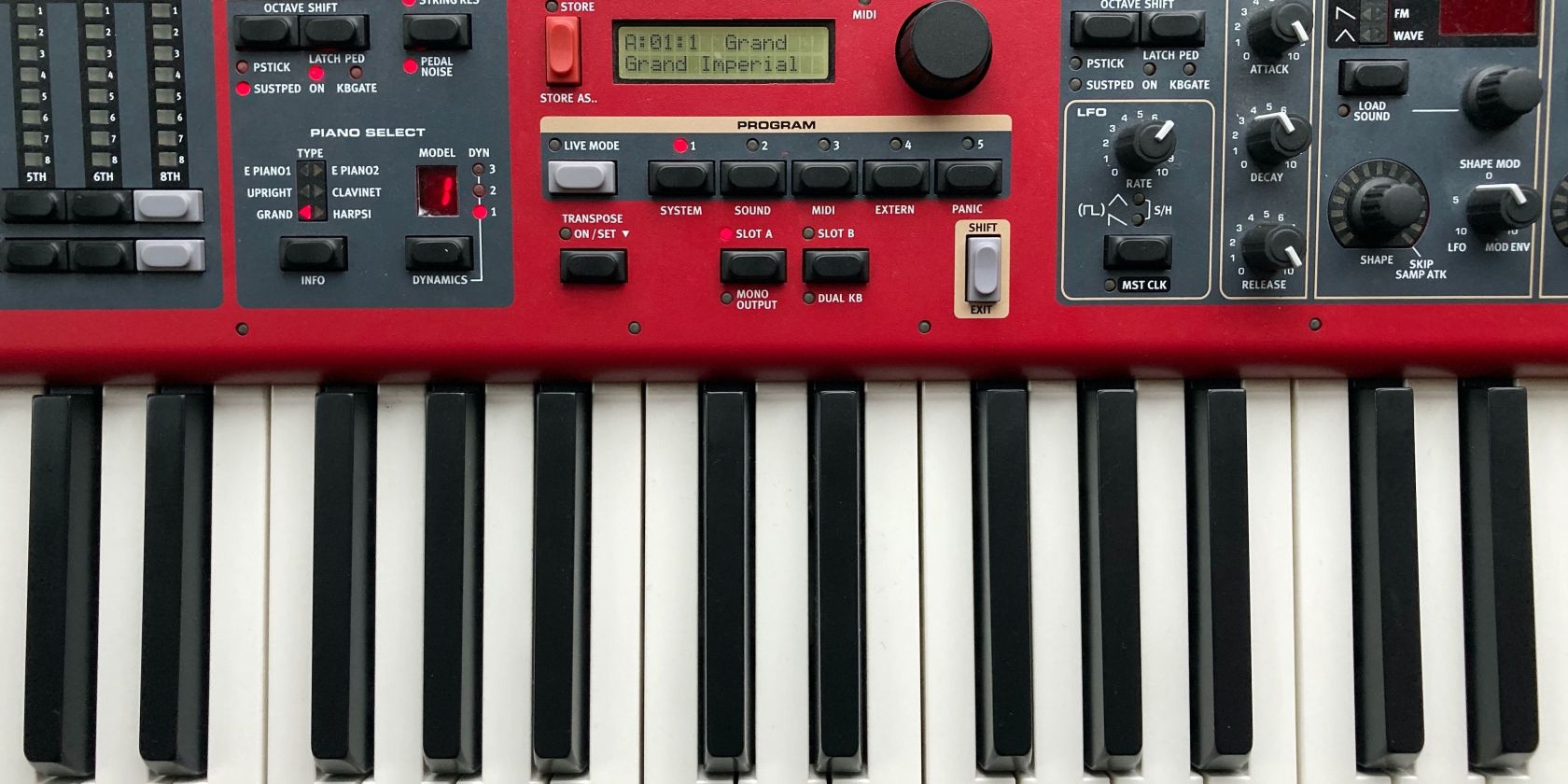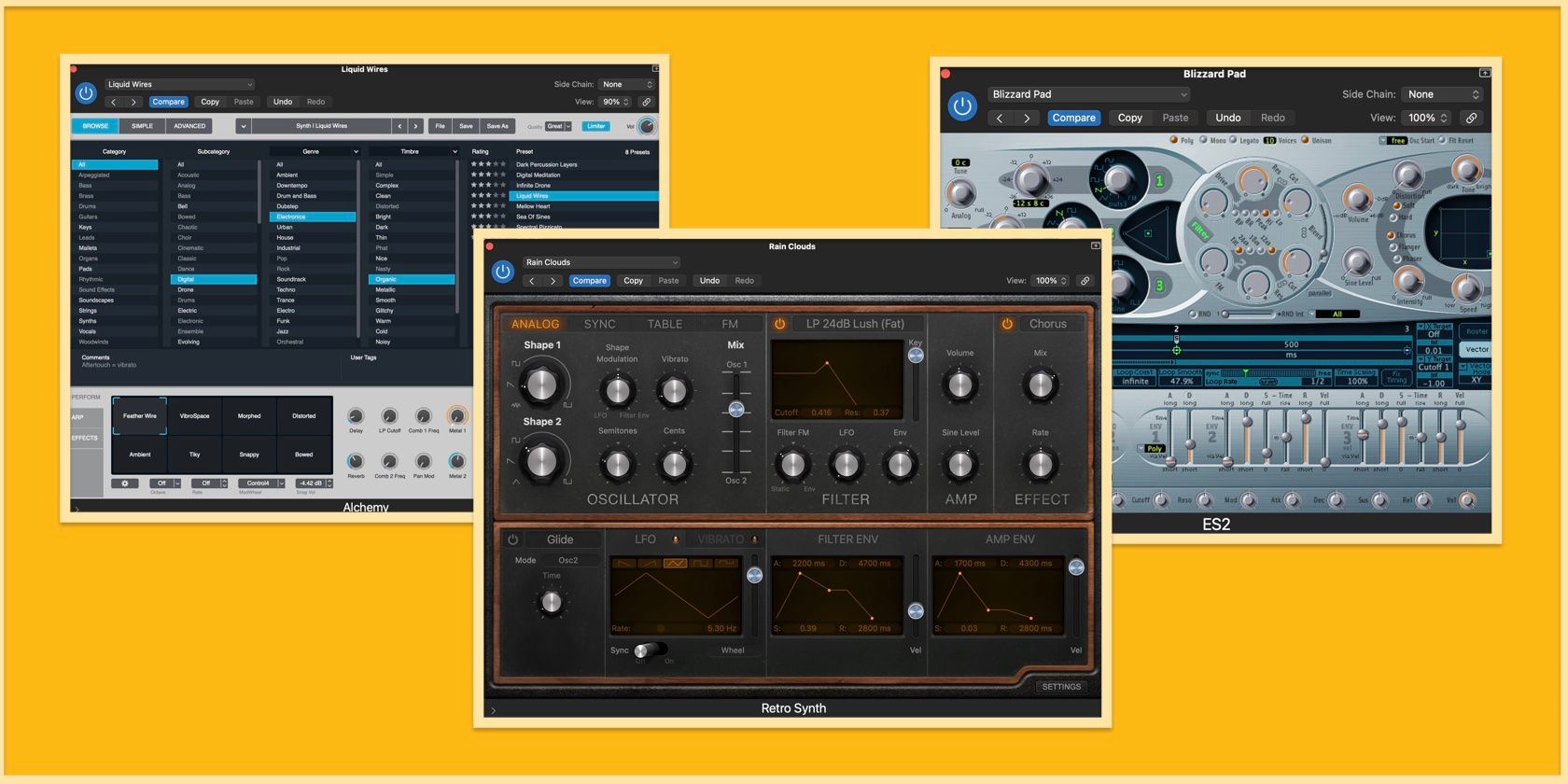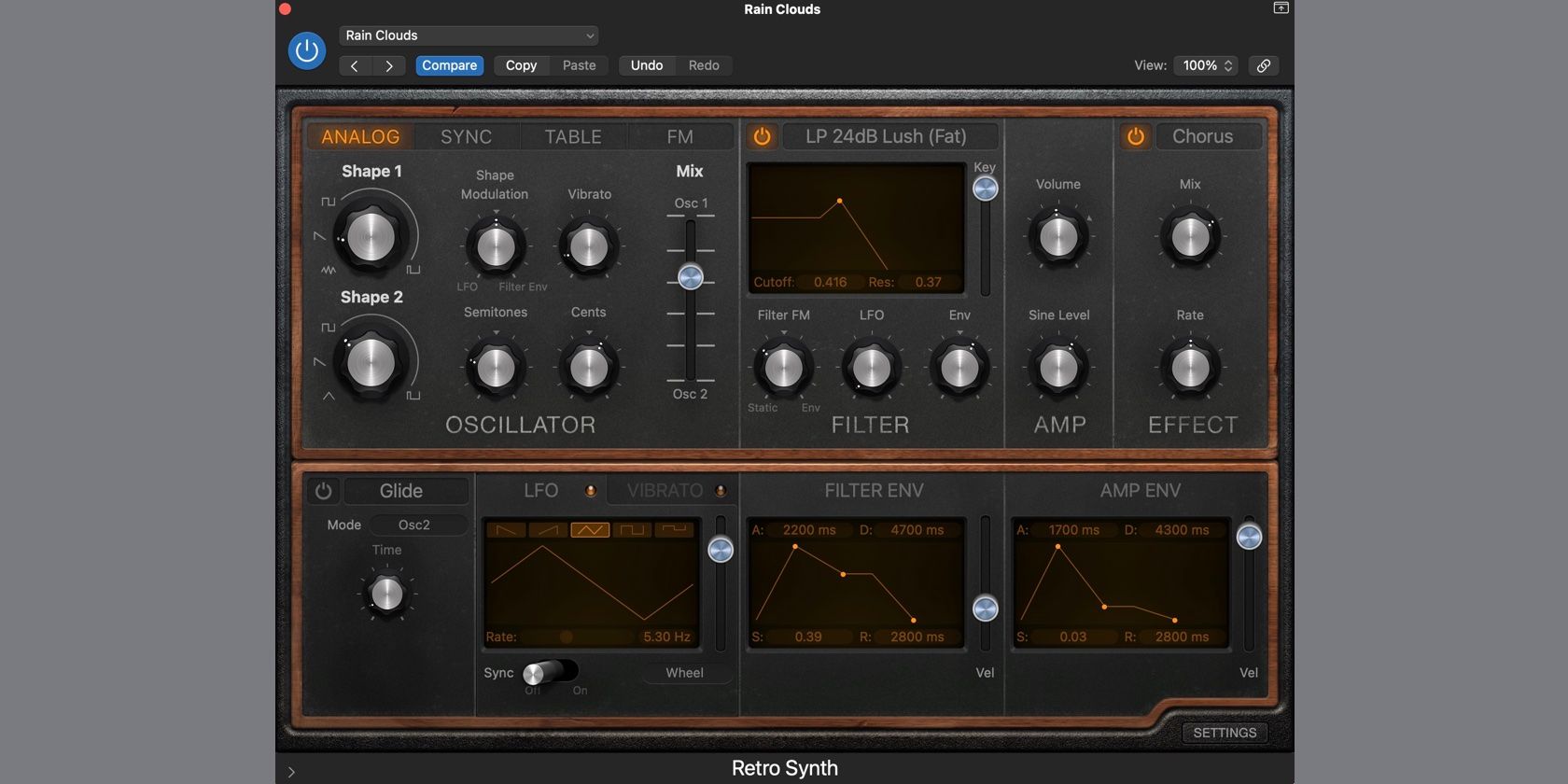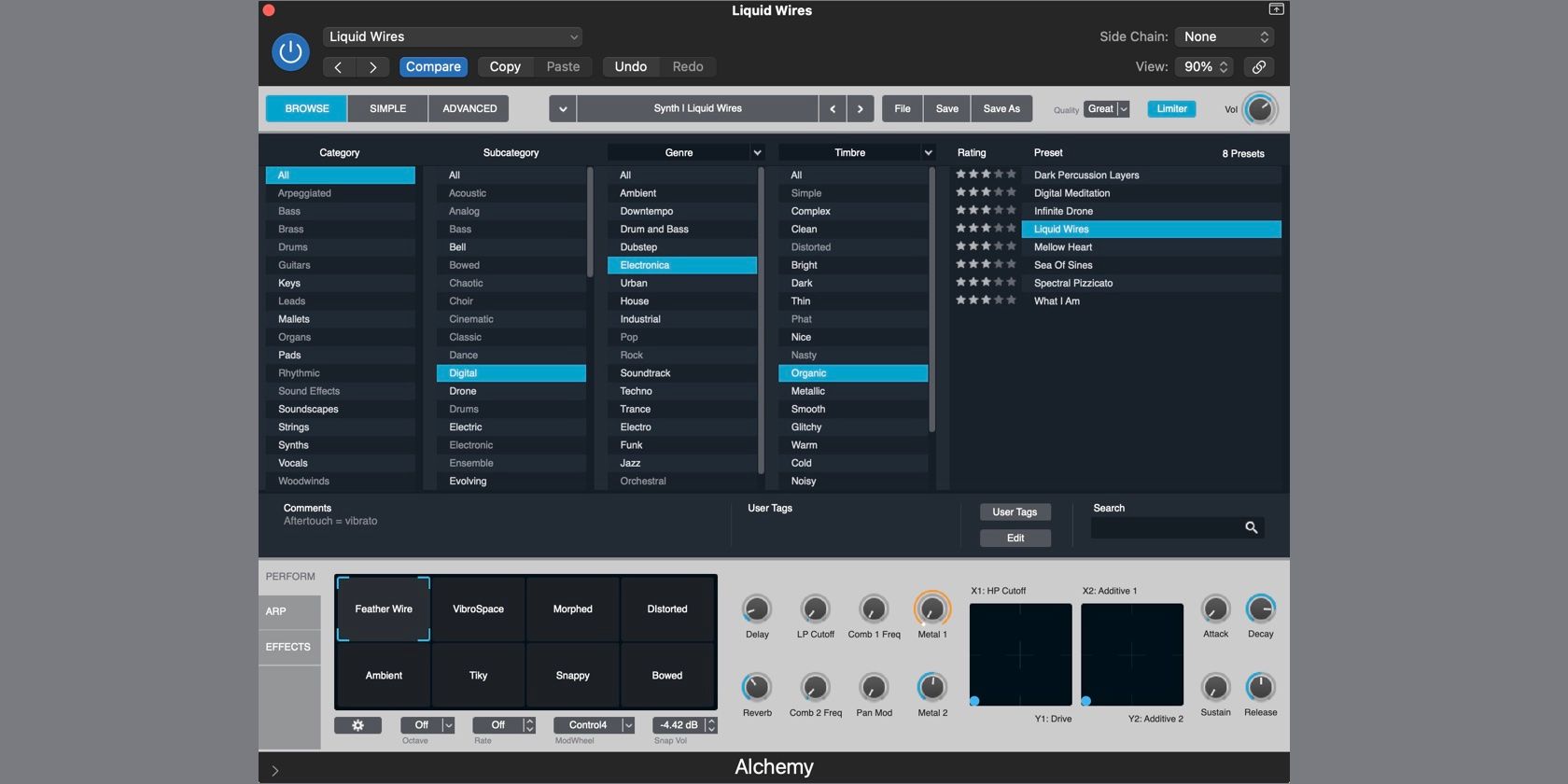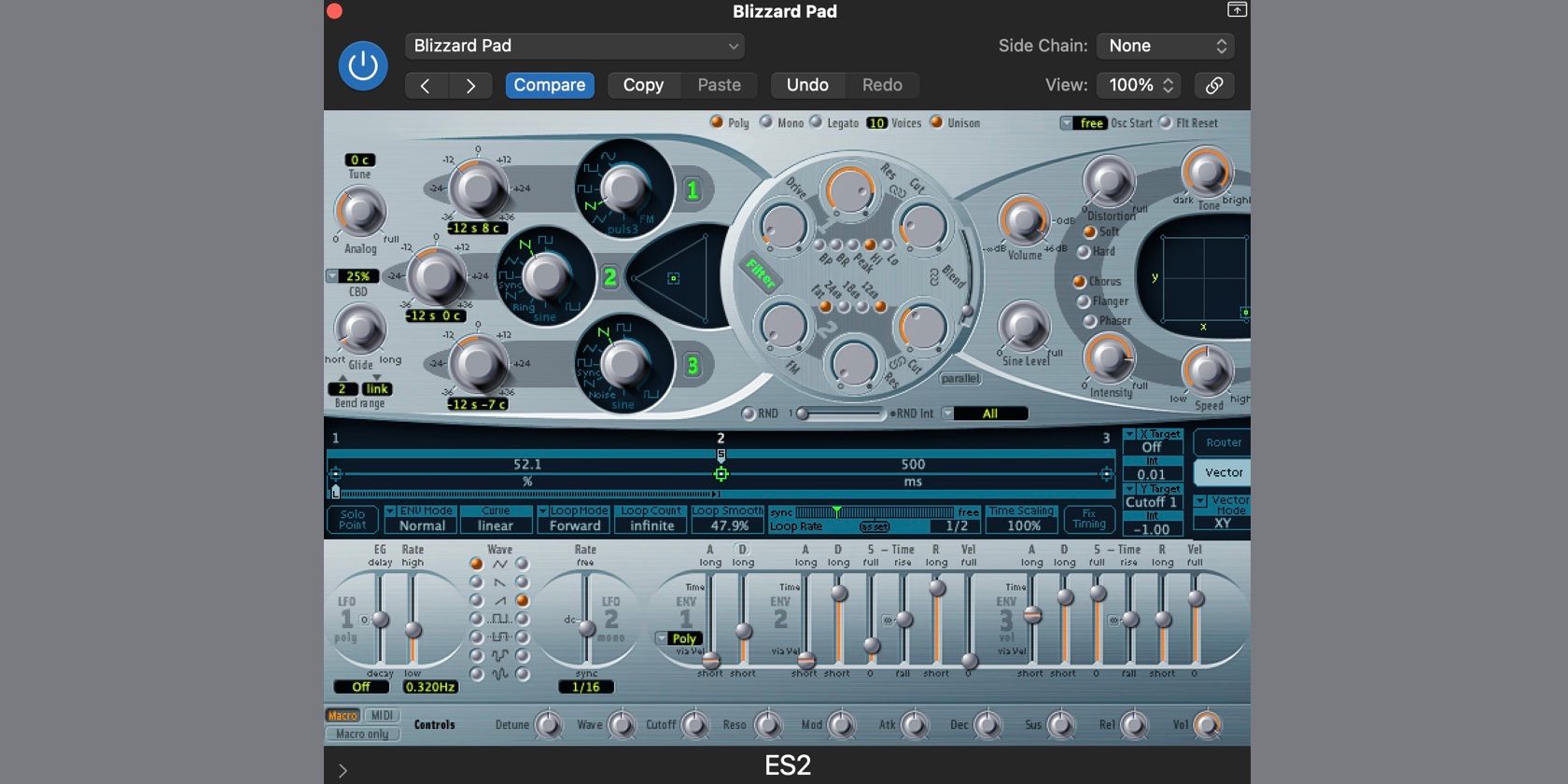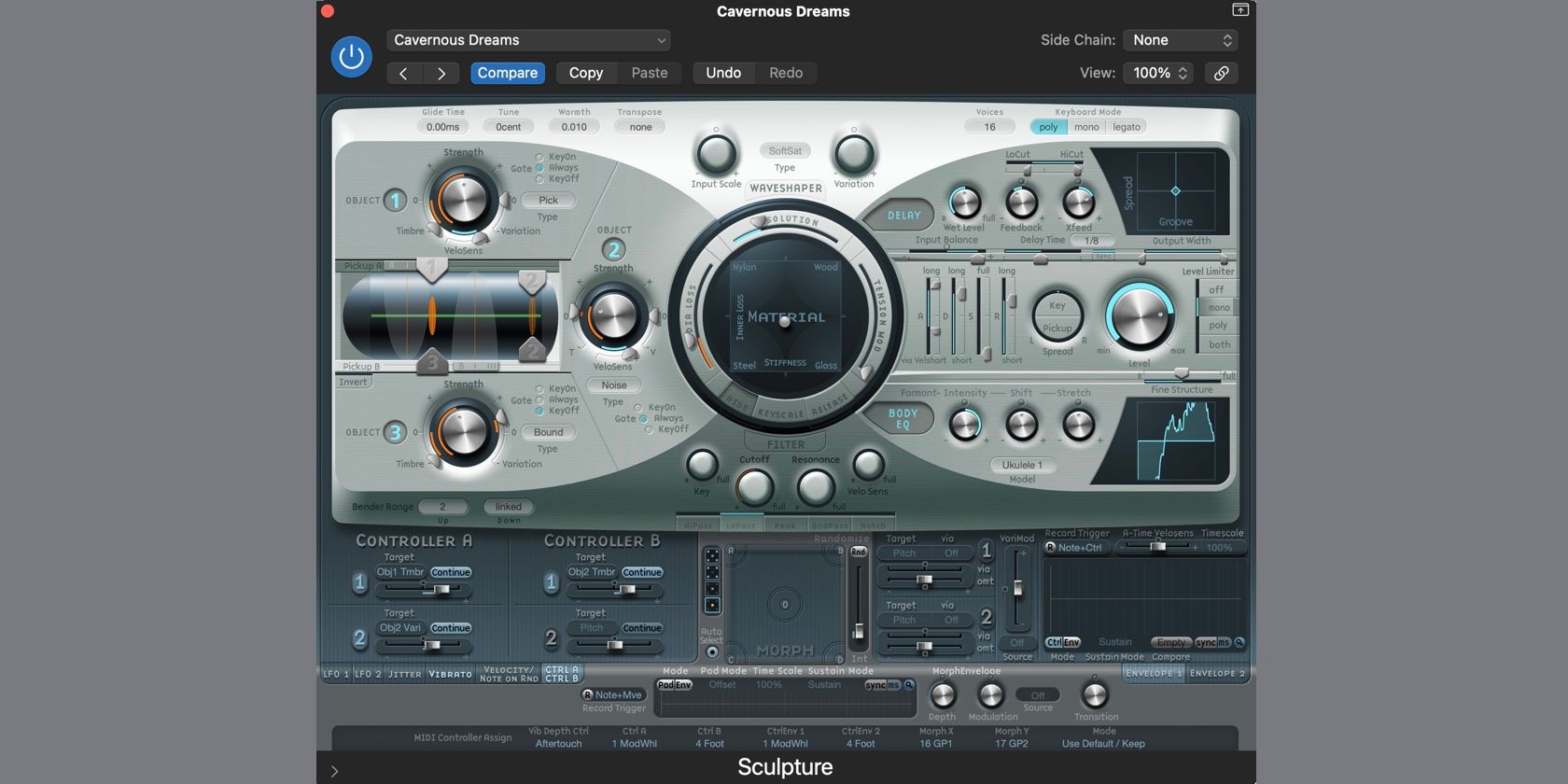With so many synthesizers on offer in Logic Pro X, choosing the right one can be overwhelming. By our count, there are 11 stock synthesizers for you to play with—entirely for free. To help you choose, we've narrowed the list down to the top four Logic stock synthesizers.
The Retro Synth has long been a go-to because of its user-friendly interface, while Alchemy is known as a powerhouse that can do almost anything. Outside of that, the ES 2 synth may look complicated, but it will deliver incredible sounds.
An Overview of the Synthesizers in Logic Pro X
Part of the reason that Logic Pro is one of the most popular DAWs today is because it offers a huge platter of synths to feast on. You don't need to download third-party plugins because Logic Pro has 11 distinct synthesizers ready to play for free.
Alchemy is one synth that stands out, it combines several synthesis engines into one, in addition to a sampler, sequencer, and arpeggiator. You could spend years mastering this one synth alone.
But there are some other interesting synths hidden away too, like the E range of synths. They include simple plugins like ES P (Poly), designed to emulate a classic 80s synthesizer—with an interface to match too!
It's a legacy plugin that Logic decided to keep when it acquired the DAW from its previous owners, and if you can get past the outdated look and feel, it's worth checking out.
Since there are so many fantastic synths in Logic's toolbox, it's useful to start by checking out the top few first. However, if you're curious what other synthesizers are native to Logic Pro, here is a complete list:
- Alchemy
- Retro Synth
- ES 1
- ES 2
- Sculpture
- Drum Synth
- Ultra Beat
- ES P (Poly), ES M (Mono), ES E (Ensemble)
- EFM1
1. Retro Synth
Summary: A 16-voice synthesizer with four synth engines. Its user-friendly interface makes it great for beginners, but with plenty of advanced features for pro users too.
At the top of our list is Retro Synth. It's a fan favorite of many producers and for good reason; its advanced features are balanced well with a beginner-friendly interface, and creating sounds in Retro Synth couldn't be more fun.
Retro Synth is laid out in two main sections with the oscillator and filter on top, and the filter envelope, amp envelope, and LFO on the bottom. In other words, you can choose the waveform using the top section, and shape the sound using the bottom section.
Compared to synthesizers like the ES 2 (which we will look at later), Retro Synth is far less intimidating. It looks modern, is logical to navigate, and creating sounds is easy to do without much knowledge of what each knob does.
Under the hood, there are four synthesizer engines that you can use: Analog, Sync, Wavetable, and FM. Each one has its strengths. The Analog engine, for example, is perfect for classic synth leads, pads, and basses. Wavetable, on the other hand, produces clean digital sounds. And Sync is used for aggressive leads and basses.
If you haven't quite wrapped your head around what the different synth types do, then don't worry, there are tons of presets that you can click through for a quick start. Next time you use Logic, open it up and see for yourself. You're guaranteed to get pleasing sounds right from the get-go.
If you're thinking of expanding your setup, you should first know the difference between MIDI keyboards, MIDI controllers, and synthesizers.
2. Alchemy
Summary: Perhaps the most powerful synthesizer in Logic to date. Its massive preset library will help beginners get started, and the morphing function lets you quickly experiment with sounds.
The Alchemy synthesizer is Logic Pro's hottest draw card. Many people have purchased Logic just for this incredible flagship synth. With so much to unpack, Alchemy can seem overwhelming at first, but its vast preset library is a great entry-point for both beginners and pros.
One important thing to note is that it's a sample-based synthesizer. This means it uses audio samples as its sound source, instead of an oscillator like the Retro Synth. However, if you do want to create traditional synth sounds, you can do that too using virtual analog synthesis.
At first glance, Alchemy is sleek and beautiful, and searching through the presets is a lot of fun thanks to the way that they are grouped. You can search by category, subcategory, genre, and timbre, making it quite easy to locate a sound for a specific mood. As an example, we searched in All > Digital > Electronica > Organic, which gave us presets like "Liquid Wire" and "Sea of Sines".
Alchemy is a fitting name since you have the function to seamlessly morph between presets. You can do this by dragging your mouse across the eight different pads in the bottom left-hand corner. The different names like "Feather Wire", "Snappy", and "Distorted" give you an idea of what you might expect to hear.
As a result, the number of unique synthesizer sounds you can create is staggering! If you want to produce never-before-heard sounds, then Alchemy is for you. After buying your first MIDI keyboard, you can start to make the most of this fantastic synth.
3. ES 2
Summary: An older synth in Logic Pro that still produces great sound to this day. If you can get past the spaceship-like design, then there's plenty you can do with the ES 2.
Before Alchemy came along, the ES 2 was the most sophisticated synthesizer that came with Logic. It has a distinctive spaceship look and a ton of different synthesis options on display.
Many people find it difficult to get past the design, which feels a bit dated by now (especially when compared to Alchemy). But for those that are adventurous enough, it has a huge number of routing options, making anything possible from a programming point of view.
Of course, not everyone enjoys the nitty-gritty of programming a sound from scratch, so you might opt to use the presets instead. You can't go wrong here if that's what you choose to do since, like all of Logic's top synths, there are plenty of great presets for you.
If you need further convincing to give the ES 2 synth a chance, despite its uninviting interface, then check out this short tutorial for how to make the bass sound from Poker Face by Lady Gaga. It goes to show that old synths still deliver great sound.
4. Sculpture
Summary: A complex but powerful synth for recreating physical instruments. It's not likely to be your go-to synth for everyday tasks, but it is great for crafting unique sound design elements.
Sculpture is a modeling synth which means it's great for simulating the sound of physical instruments. It's fantastic for producing bell sounds or emulating stringed instruments, but due to its complexity, it requires dedicated learning.
On the plus side, it has a more intuitive layout when compared to the ES 2 synth, albeit with some unusual controls. For example, the center XY pad lets you morph the sound between qualities like Wood, Steel, Glass, and Nylon.
You also have ADSR controls which let you change the articulation and shape the sound. When you combine this with the sound qualities mentioned above, you might realize that all these settings work towards sculpting an instrument.
While there are better everyday synths for creating pads and basses, Sculpture is excellent for sound design. If you're a beginner, you may want to reserve this synth for a little later on once you've got a good grasp of the basics.
If you'd like to explore other DAWs, here is an overview of the stock EQ plugins in FL Studio.
Top Tier Logic Pro Synthesizers
With Logic Pro you don't have to buy expensive third-party plugins if you want a top-tier synthesizer. Many people try Logic just to test out its flagship synth called Alchemy, which can do just about anything.
If you're looking for a beginner-friendly synth, then nothing beats the beloved Retro Synth. While for those that are dedicated to learning how synths work, the ES 2 and Sculpture offer endless hours of tinkering.
Before you look elsewhere, make sure to try the top stock synthesizers that come with Logic.

